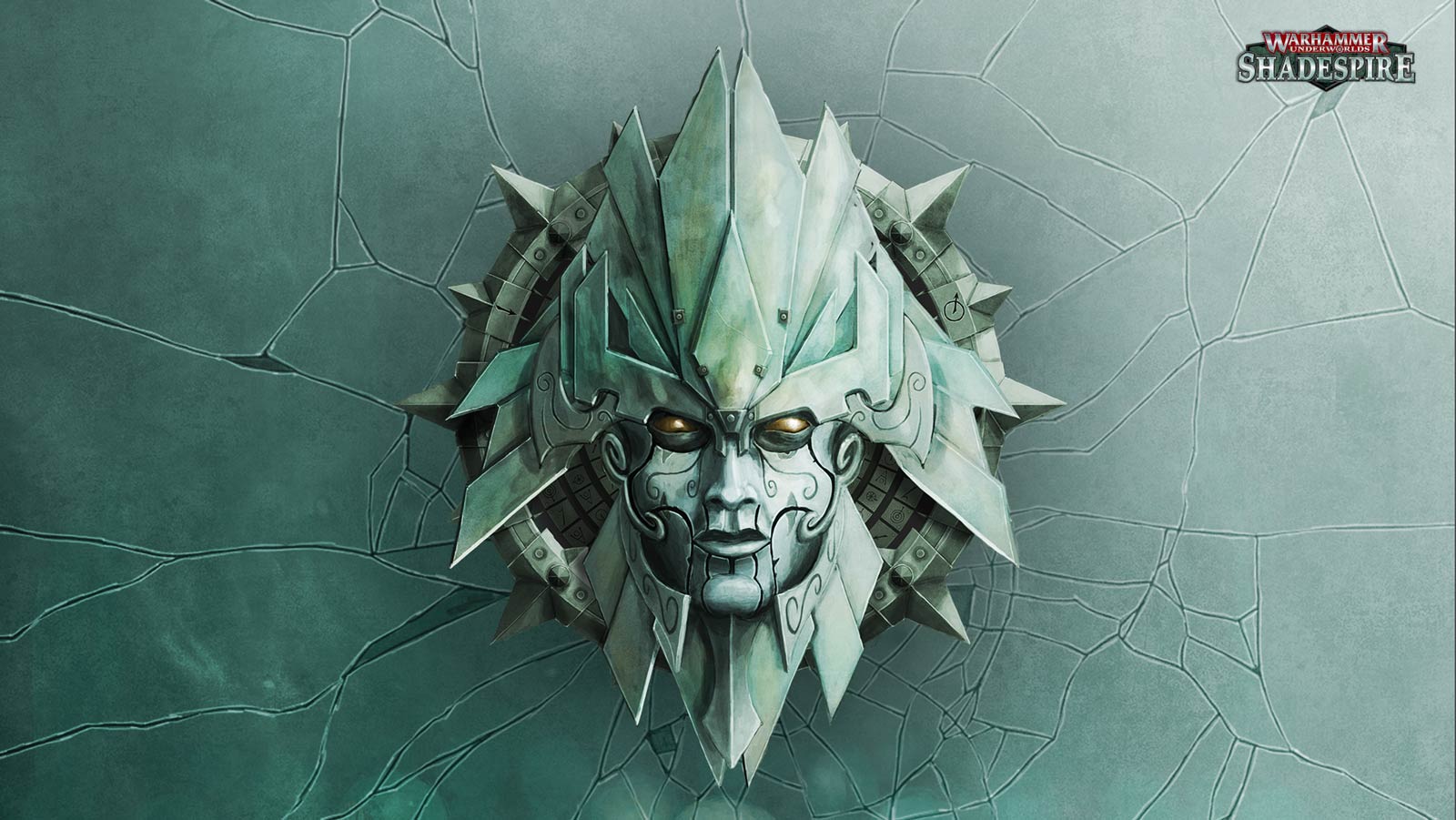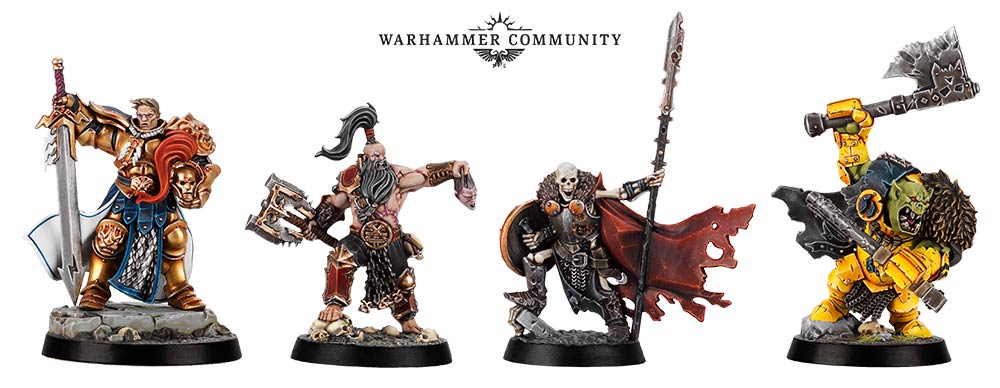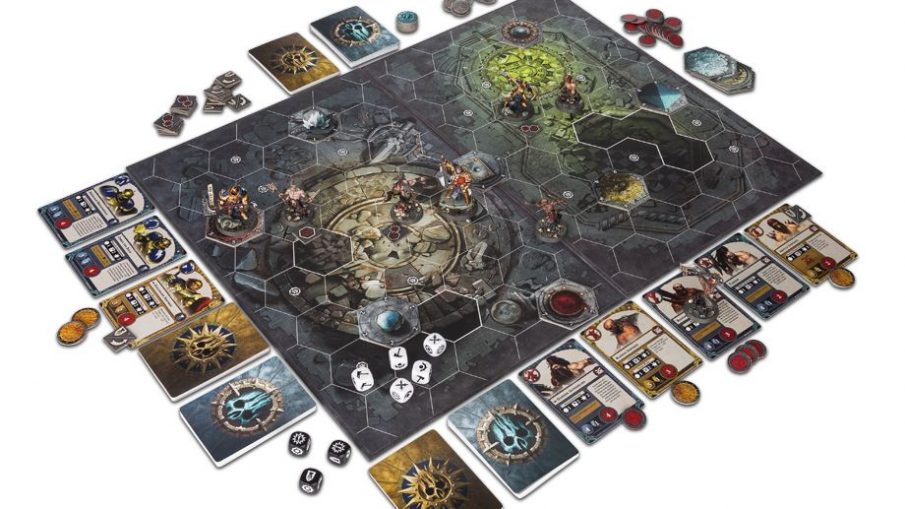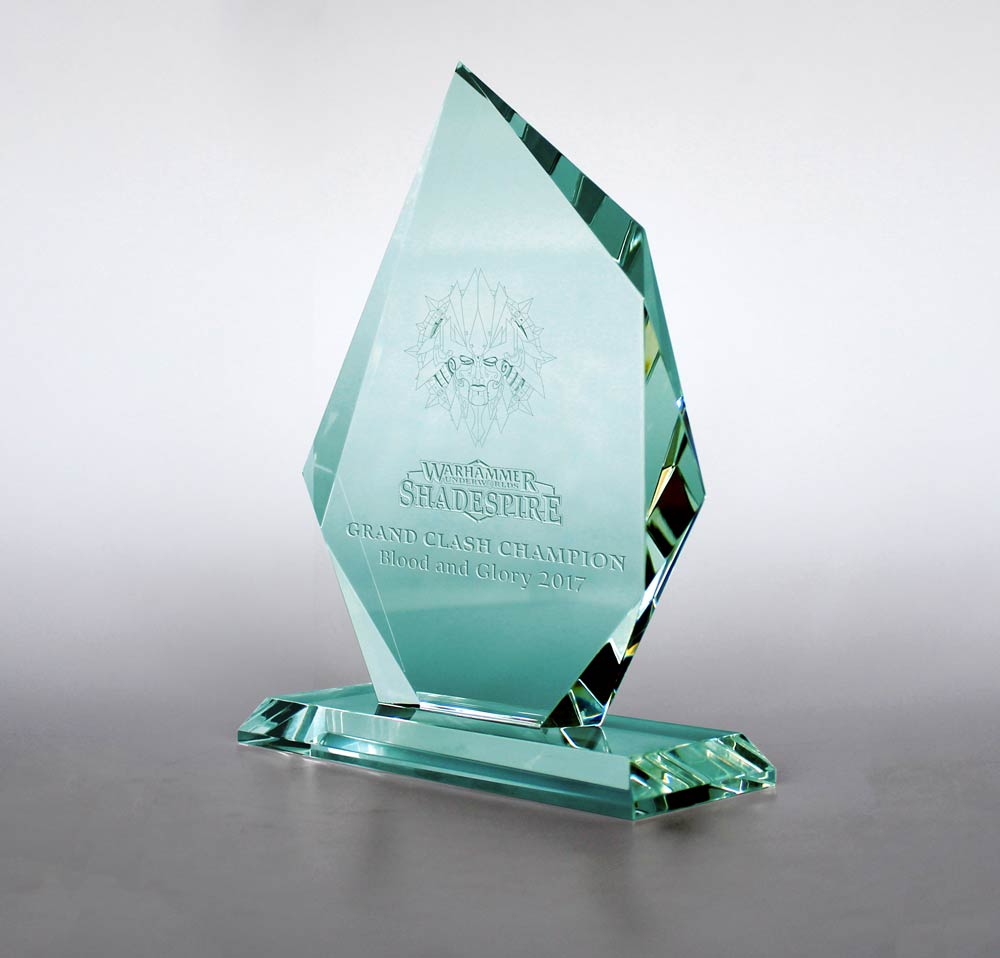Let’s take a look at the amazing new game from GW that’s making waves in the tabletop world – Warhammer Underworlds: Shadespire!
So GW recently released a new game that they’ve been previewing since last Adepticon – Warhammer Underworlds: Shadespire. You may not have played it and might be curious about what the hype is, so I’m here to give you a quick look in this preliminary article about Shadespire.
Warhammer Underworlds: Shadespire (or just Shadespire for now) is a new game based in the Age of Sigmar universe. It’s a game unlike the main 40k or AoS titles – while those focus on creating an army and fighting over a whole table, Shadespire is played between two small warbands in a tight, almost claustrophobic playing field. You may have seen some people playing it or even tried a demo game for yourself, but let’s take a closer look in this article.
Shadespire is an interesting type of game. It borrows ideas from other tabletop properties while remaining unique to them by not copying anything completely. Some people have compared the scope and playstyle to X-Wing, while the hex tiled board has obvious connections to GW’s previous board game, Gorechosen. However, it takes all these bits and pieces of gameplay mechanics and puts them together into something quite smooth and solid, which is just fun all around.
Here’s the quick rundown: you pick a Warband to play as and then build two decks, one for Objectives and one for Upgrades and Ploys (various tricks and tools). You and your opponent then set up the board and the game plays very quickly since there are only 3 turns with 4 actions each turn per side. Your decks will dictate how you play the game and even the same matchup with the same decks can have wildly different outcomes.
There are currently four Warbands, all of which have their own unique playstyle. Khorne has a lot of cards that encourage speed and violence, rewarding death on either side of the battlefield. Ironjawz also like to get into fights, but more reward just brawling in general more than killing things outright (which doesn’t sound like much of a distinction but plays very differently on the tabletop). Stormcast reward you for being defensive, denying opponents while crushing opportune targets. And finally, Sepulchral Guard have the most tricks, their cards generally wanting to wear their opponents down through a combination of extra bodies, crazy effects, and resurrecting fallen allies.
Deck construction plays a huge role in how you play the game. There are three types of cards: Objectives, Ploys, and Upgrades.
Objective cards grant you Glory (victory points) for meeting their text, so what cards you put in will dictate your playstyle. Lots of cards that require you to capture objective tokens? Your moves will likely be more about getting into position more than getting into combat. On the flip side, there are plenty of cards that give you extra points for taking out enemy Leaders, or crushing multiple models in a single turn.
Ploy cards allow you to do things outside of the normal actions. These can be as simple as moving a Fighter one extra hex, or as powerful as taking an extra Attack when you otherwise wouldn’t be able to. These are generally the most powerful cards – they happen immediately and let you take Actions that are potentially game winning. Which ones you put in, when you use them, and how your opponent responds is one of the more interesting parts of the game.
Upgrade cards make your characters stronger, simple as that. Some are very straightforward: Great Fortitude will give a fighter +1 Wound, meaning it takes more attacks to take him down. Others can have more subtle effects: Total Offence will let your Fighter roll extra dice for attacking at the expense of not being able to attack later on in the turn, forcing you to decide between reliability now vs later actions. All Upgrade cards force you to already have gained Glory to equip them, so while some of them are very powerful, you have to have already made some progress before you can power up your Fighters.
Your Objective Deck is set at 12 Objectives, and it can be quite a decision on which ones to bring. There are ones that grant lots of Glory but rarely will come up in a game, while even the simpler ones might be less than reliable depending on the state of the game when you draw them.
Your Power Deck is at least 20 cards mixed between Ploy and Upgrades, where at least half of them need to be Upgrades. While Ploy cards are more powerful, this obviously requires you to bring more Upgrades than you may like. While upgrades are often powerful, you may find that you don’t have enough Glory to equip them or the specific effect is not very useful when you draw it. Constructing a competitive Power Deck is at once both straightforward, in that you know which cards help you the most and have synergy with your Warband/Objectives, and difficult, in that you have to make some very hard decisions about which cards will have the biggest effect in the most games.
Once you’ve chosen your Warband and carefully built your decks, the time has come to play a game. During the setup process, you and your opponent each select a board for play. There are currently two double-sided boards, giving you four different options. One of the players is randomly selected to decide how the boards are set up adjacent to each other, and then both players take turns placing Objective Tokens, the player who decided the board placing 2 objectives while the other player gets to place 3. Because of all the different ways to place boards and tokens, along with random Objective numbers, the board will probably be completely different in every single game you play!
As I said before, gameplay is really fast and smooth. Each player takes turns having 4 Actions per turn, with a Power Phase in between each Action letting you play your Power cards. While the first couple games may have you referencing which actions you can take and what cards do what, you’ll quickly pick up and spend more time planning and thinking ahead than checking rules. You can easily knock out a game within 20 minutes if both players are playing quickly, and even a Best of Three format doesn’t feel like a long process.
With basic Actions, you move around the board, attack, defend, or draw cards from your decks. With only 12 regular actions in a game, each one must be considered carefully, as you may easily find yourself 1 action short of being able to pull off the win, or left with an action that you can’t use to accomplish anything worthwhile.
So why are people loving it? It’s a slick game, easy to pick up but hard to master. The models, despite being push-fit, are amazing looking with stunning detail. For a relatively reasonable investment ($60 USD for the core set, $30 per expansion) you can get a good range of great looking models and a game that you can play with basically anyone, even if they’re not hardcore tabletop players.
For the competitive players, the deckbuilding aspect along with the different warbands has already created an interesting meta, where people are creating and modifying decks pretty much every time they play. We’ve already seen aggressive decks feel strong at the start, followed by people building defensive decks that eschew direct conflict, and now people teching in cards that punish the opponent for not fighting. And that’s just in the first month, with only a few events period.
Early next year, LVO and Adepticon will both have pretty huge events, each sponsored by GW with wonderful trophies for the overall winnners! If you are planning on attending or just want to learn more in general, check out Frontline for even more Shadespire articles, where we’ll talk a bit more about specific strategies and card overviews, to help you create your best deck and shoot for those top tables!
If you want to start your own Shadespire journey, remember that Frontline Gaming sells gaming products at a discount, every day in their webcart!







I’m looking forward to local events starting for this
It is quite a fun game. The gang here loves it and already have two of the warbands painted up.
Do you think it’s a good fit for a very casual setting? Considering it as something to play with the family.
I’ve played some games with non-gamers and they seem to enjoy it. It’s more complicated than your average board game but if you can get them to sit still for a couple minutes it’s not hard to pick up.
Yeah, a bit complex, but not too bad.
We’ve already got a handful of stores that are running leagues, and had a small tournament already! Even more planned for next year, pretty much everyone who tries it has loved it.
I just got to play it last weekend. Hoping to be picking up my own set (also meaning the group will have 2, so we can do 3-4 player games) tomorrow.
It’s amazing how much you can actually do during those 12 Activations, even tho it seemed like a horribly limited amount of time when I first read about it. I really groove on it, tho. The pressure really makes every single decision matter. I haven’t had a chance to dive into the deck building yet, but just playing through decks that our buddy had made, it was clear how much difference there is between the two forces (StormCast and Sepulchral Guard in this case), and I’m sure there’s a lot more room to play around with that.
I also really like that, unlike AoS or 40K, or even Shadow War/Necromunda, it’s easy to play while sitting down, which is a very nice feature for someone with a bad back and knee problems.
I just wish the Duardin group coming out in a bit were Dispossessed or Kharadron, not Fyreslayers. Really looking forward to the Skaven, tho.
Nothing to stop you making conversions.
That’s what I’m planning on doing, but I still want some classic Dwarves done with the same level of awesomeness as the rest of the Shadespire dudes.
I totally agree! I’m gonna do a longer article on Activations and making the most out of them, because while 12 doesn’t seem like a lot with just the basic Actions (move, attack, charge, etc), the amount of choices you have to make every single time is staggering and really exciting. I rarely feel like my choices are pre-determined or limited, unless I messed up previously.
I remain revolted by that yellow armor on the Or(ruks?). Terrible.
Plenty of great other schemes to be done at least.
Leadbelcher looks the bestest!
I’ve never actually seen anyone use it in real life haha. I think I’m gonna do mine up in Red or Purple, personally.
Yeah, I really don’t know why they think that’s a good colour scheme for them. There are so many better ways to paint those guys.
I actually really like the yellow armor, myself, lol! I love the high contrast but then, that is how I paint all of my own armies, too.
I’m not sure quite what it is that makes me dislike it so much on the Ironjawz. I like basically the same scheme in 40K when it’s on Bad Moonz.
Really liking the look of this. As someone who plays both mini games and card games I can tell this could appeal to the latter and get people hooked on the plastic crack. I’m definitely looking forward to playing, though my main gaming mates collect the represented armies in AoS so likely they’ll play those and I’ll play whatever until a faction I collect in AoS comes around.
It’s a really nice merging of both. I’ve enjoyed painting the models a lot, but the deck building is really where you get the depth and breadth of the game.
Honestly thinking of getting another set of everything just to do some serious conversions to make mine stand out!